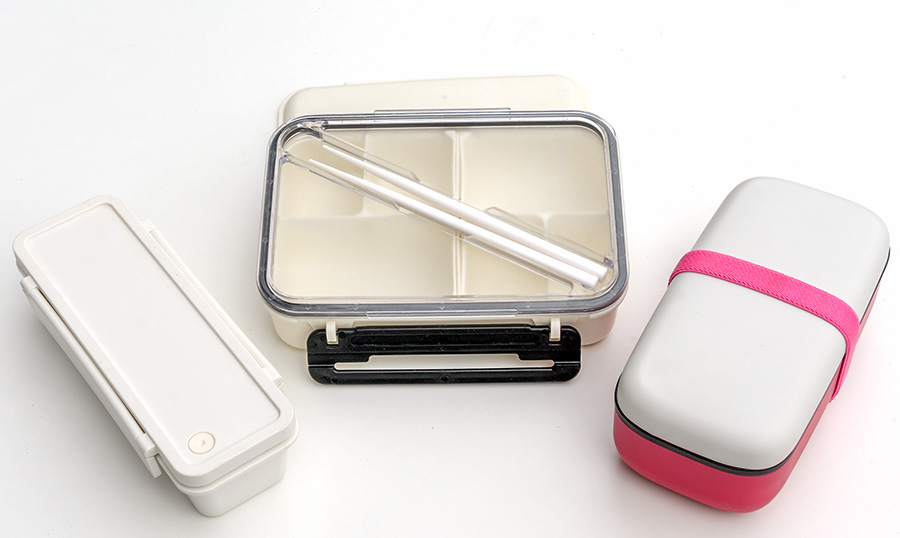The best bento box for you really depends on your needs
As you may know, I was kind of away from this site for a while. Although I was still writing about food here and there, and about various topics related to Japan and Japanese culture, I have been rather absent from the world of bentos. Well OK, I did write another bento cookbook! But still.
In my absence, the concept of the bento box has become a lot more popular. It is no longer difficult to find a suitable box and other equipment, as it used to be when I started this site back in 2007. People are packing all kinds of bento boxes, or lunchboxes if you prefer, as the myriad of results for searching for "bento box" on Google or Pinterest and more show. People who have little interest in Japanese food, or anything Japanese, are showing interest in bento lunches. This is a great thing; when I started this site, it was to to spread the concept of the bento lunch, not just Japanese recipes for bentos. Just looking through the recipes on this site (which are all 100% bento-friendly) will reveal that there are plenty of not so Japanese recipes as well as Japanese ones, and both Just Bento Cookbooks have lots of recipes of both types.
In case it's not clear, the tl;dr version is: A bento lunch is simply a portable meal in a portable container. A homemade bento lunch is usually packed in a re-usable container, and ideally contains food that 1) tastes great (and safe!) several hours after it's made, 2) meets your or your family's dietary needs, and 3) looks really appetizing.
While the general concept of the bento lunch has indeed spread far and wide, I still feel that a lot of people are not quite getting it. A case in point is a recent video review posted by the venerable American institution, Cook's Illustrated. With all due respect, I think they are rather missing the point.
There is no such thing as the one perfect bento box that suits everyone.
The problem with product reviews of any kind that choose the "best" of something is that they do not take into account that everyone has different priorities and needs. The above video review is no different. The one they chose, a large MonBento model, is perfectly nice. MonBento makes great bento boxes (here's my review of one), but is the one they selected for everyone? Absolutely not. For one thing it's huge, with a a whopping 1700ml capacity. It is actually marketed as a picnic box for 2 or more people. It's going to take up a ton of space in a backpack, and how would you pack that thing in a briefcase or a business-type tote bag? And how would a small child with a small backpack carry that back and forth to school?
Before going out to buy a bento box, think over your reasons and priorities wanting to get into bento lunches, as well as what you want to eat in them.
That's a long headline, but it really does cover the things everyone should think over before rushing out to buy a bento box. For instance:
- Do you want to really get into Japanese style bentos? Then of course, a 'traditional' Japanese bento box will work perfectly.
- Are you interested in creating charaben/kyaraben, i.e. decorative bentos with cute faces and such? Again, a small Japanese style bento box works great.
- Are you going to be mainly packing 'fluffy' food like salads and sandwiches? A Japanese style bento, whether the food in it is actually Japanese or not, is packed very tightly with very little room for the food to move around. This means you can pack a lot of food in a small container. But if you'd rather pack food that needs a lot of space and can't be compacted, such as a salad or a large sandwich, then you will need a container large enough to hold the food plus the air it needs around it. It's possible also that you, or your child, is the type that needs to have each food separate and not touching each other, in which case you'll also need a box with lots of space or even multiple compartments. (If you are just going to be packing the standard sliced bread type sandwich, you could just get a sandwich box.)
- Do you want to warm up your food before you eat it in a microwave? Then you need a microwave-safe box of course. Alternatively you could consider a thermal lunch jar, which keeps your food hot or cold for several hours.
- Do you want to reduce or even eliminate your use of plastics? You may want to choose a non-plastic box made of metal or wood, although you need to be aware of the drawbacks of these materials.
- Last but not really least, do you really just want to collect those pretty boxes? I understand - I was like that for a while. Like collecting dinnerware or something, that's a whole other topic really. For practical purposes you do not need a huge number of boxes.
It seems to me that the only kind of lunch that the Cook's Illustrated testers were considering for their reviews were the 'fluffy with lots of air' type, which is why they went for the big box. But if that's not the type of lunch you want to pack, all that space and bulk taken up by a big box is just unnecessary.
Most people need at least 2 different types of bento boxes, plus a couple of side boxes.
Unless you only eat one type of bento lunch, chances are you will need at least 2 different types of main containers for your bentos:
One compact Japanese style box, for densely packed meals. As I've stated many times on these pages, Japanese bentos are really packed pretty tightly and hold a lot of food.
The photos here are from the Just Bento Cookbook 2; they show a pretty hearty meal arranged on a flat plate, and the same meal packed into a single-layer type Japanese bento box and a two-tier type box. The single layer box has a capacity of around 850ml, and the two tier one a total of around 750 ml. The plate is a standard dinner plate, about 11 inches (28cm) in diameter.
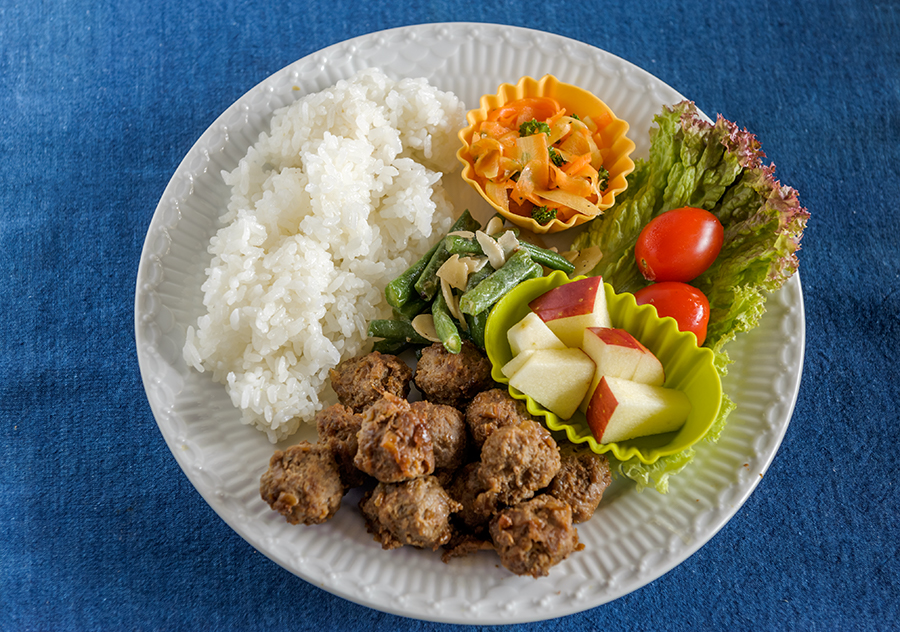
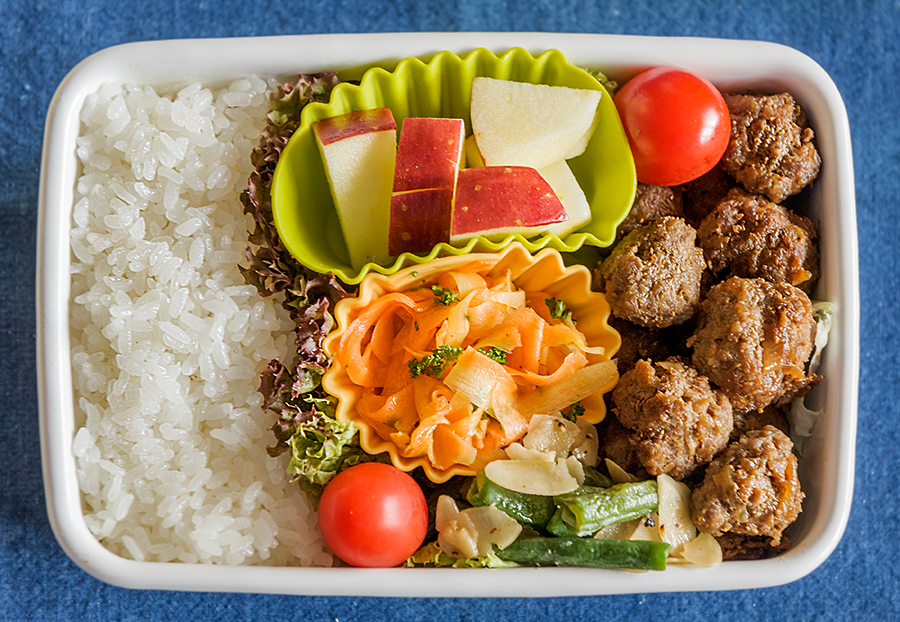
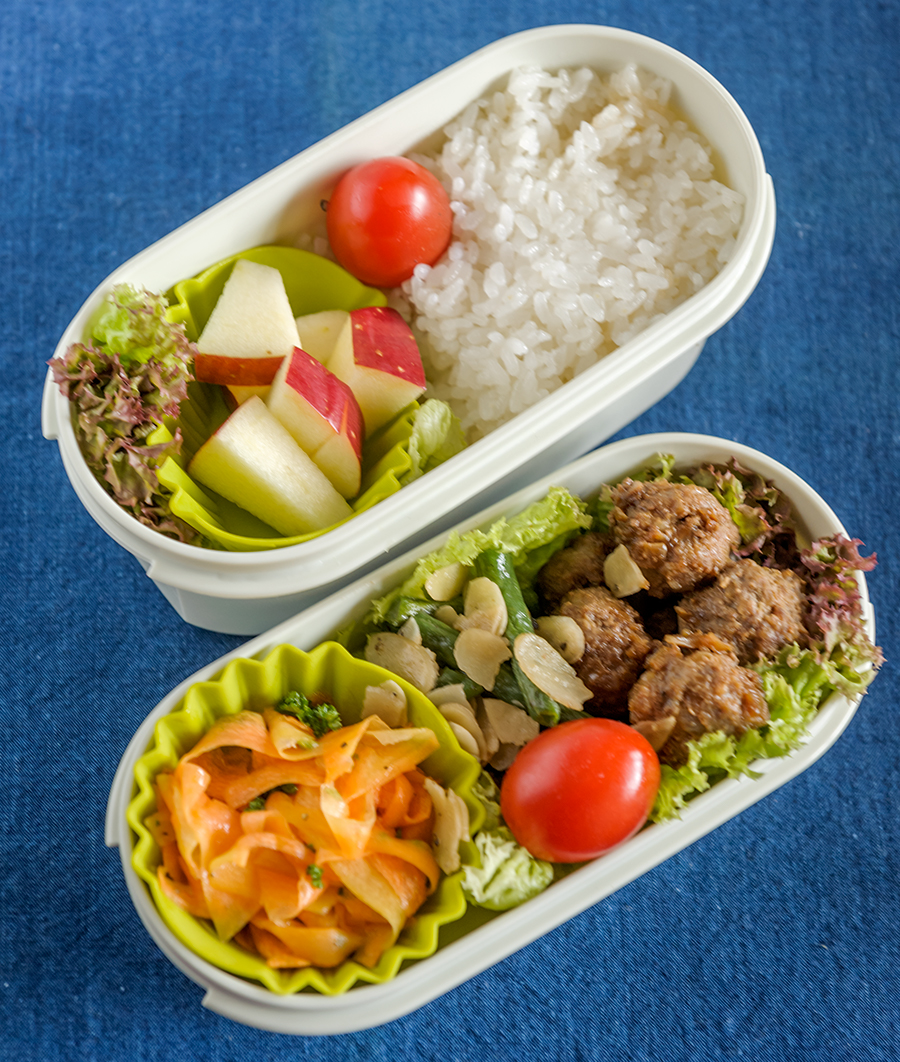
One larger box, for salads or sandwiches and other meals that need a lot of air around them. Both of these boxes have a capacity of about 900 to 1000 ml; the one on the right is a 2-tier box, which each tier holding about 500 ml. Still a lot smaller than the large MonBento box though! Personally I don't really like big boxes because of the bulk, so I prefer to pack salads in multiple boxes - one large one for the fluffy greens, and a leakproof side box or two for say, a bean mix marinated in dressing and/or shredded cheese and ham.
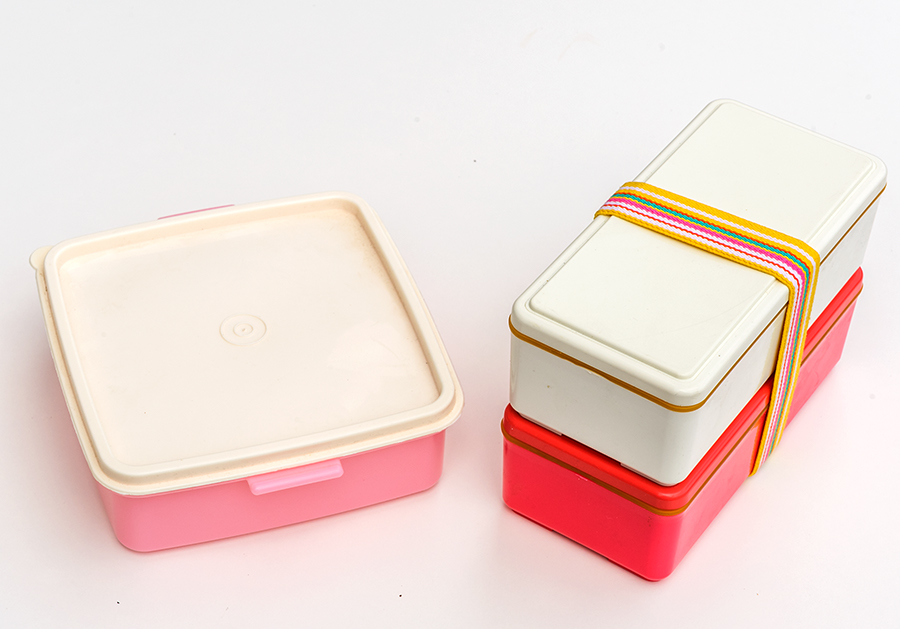
In addition to the two basic box types, you may always want to have:
Some small side boxes for fruit, dessert and so on that you want to keep separate from the rest of the food, or to use for the salad packing method described above.
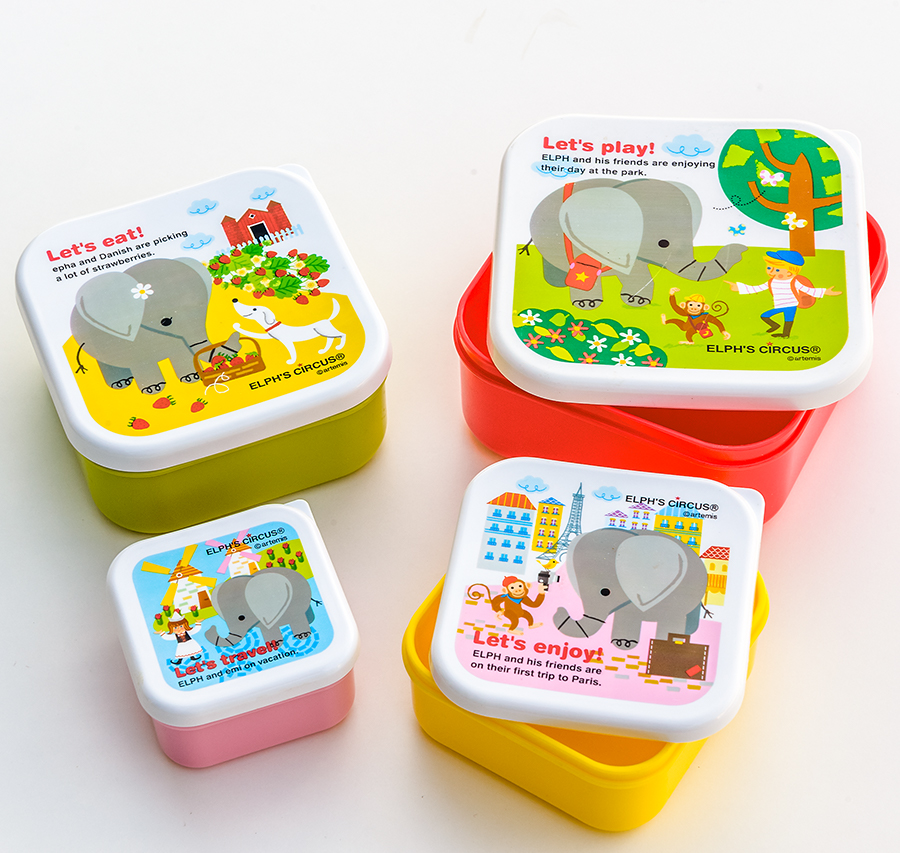
That should cover the needs of most people. If you want to add a third type of box a thermal type might be useful, especially for hot soup lunches, which are great in the winter. Here's another bento from the Just Bento Cookbook 2, with a hot soup in the thermal container and sides in a tiny yet cute children's bento box that I use as a side box.
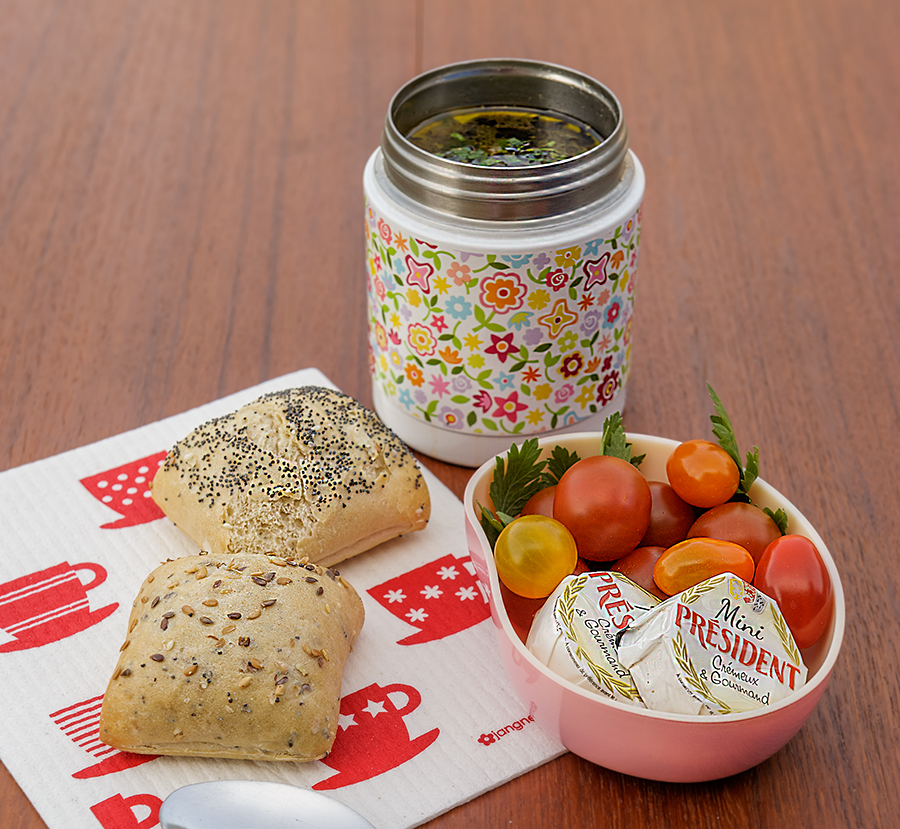
Non-plastic bento boxes

Most bento boxes are made of some kind of plastic, but some are made of other materials. My comparison chart of different types of materials used for bento boxes should come in handy. If eliminating or reducing plastics is a high priority for you, consider how much you want to eliminate. If you want 100% plastic-free boxes, they are going to leak if you put liquid things in them.
If you want to keep your bento containers totally plastic-free, the solution is to not put liquid things in them, and carry them the right way up. It's a bit of hassle to be sure, and you need to consider if you can deal with that. If you can allow yourself a reduced amount of plastic, a box with a plastic or silicone sealing gasket around the lid, a couple of inner silicone or plastic containers with lids or sealing side boxes for liquid elements like dressing may be an acceptable compromise.
Further reading
- I listed the Top 10 rules for bentos for me. It's a good exercise to try to make your top 10, or 5, or even 3 rules for what you want your bentos to be too. That will give you a clearer idea of what kind of box, not to mention accessories, you want to get.
- My bento box size guide: Which size is right for you?
- Some in-depth reviews of various bento boxes.
- My original guide to selecting the right bento box, which talks about inexpensive alternatives.
- Linked above too, but my comparison chart of different types of materials used for bento boxes should help, especially if you are considering alternatives to plastics.
- My detailed review of a LunchBots box.
To comment on this article, please go to Facebook or Twitter.
If you enjoyed this article, please consider supporting this site by becoming my patron via Patreon.

